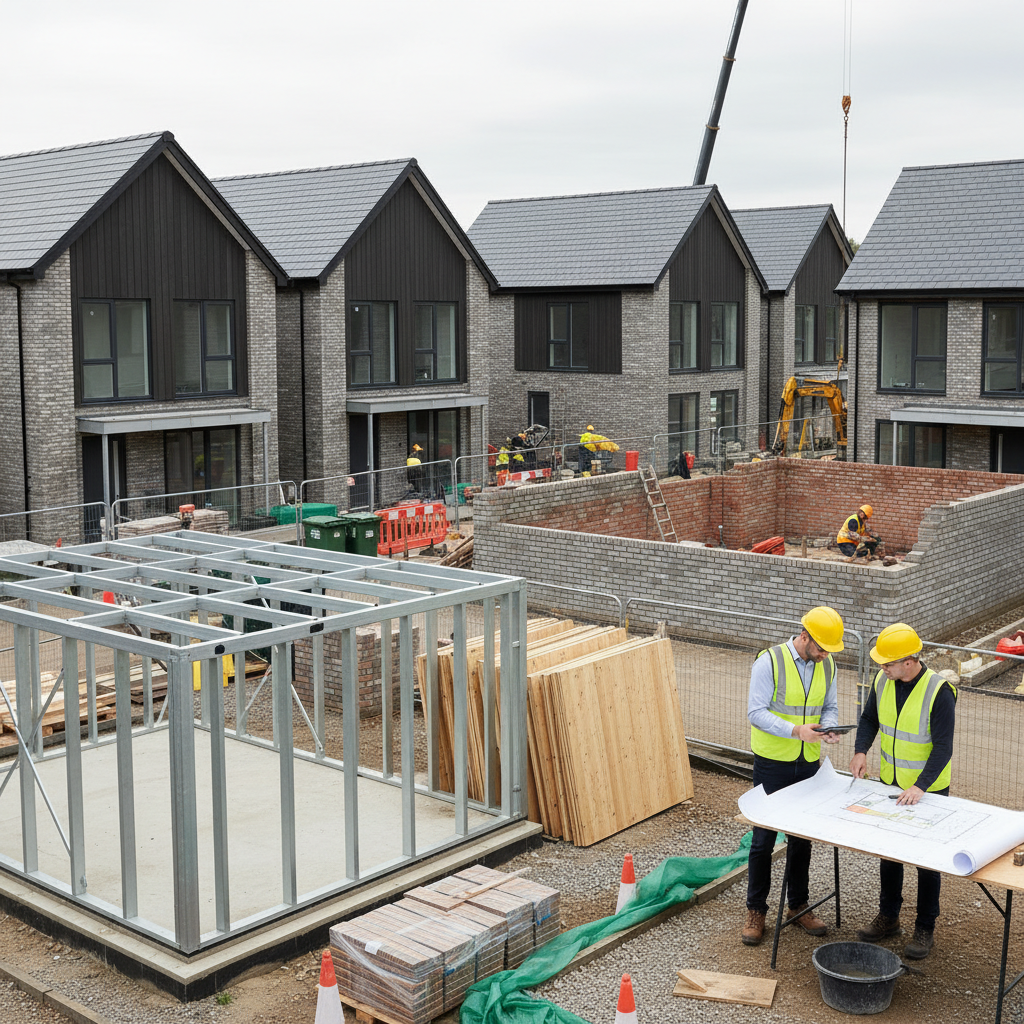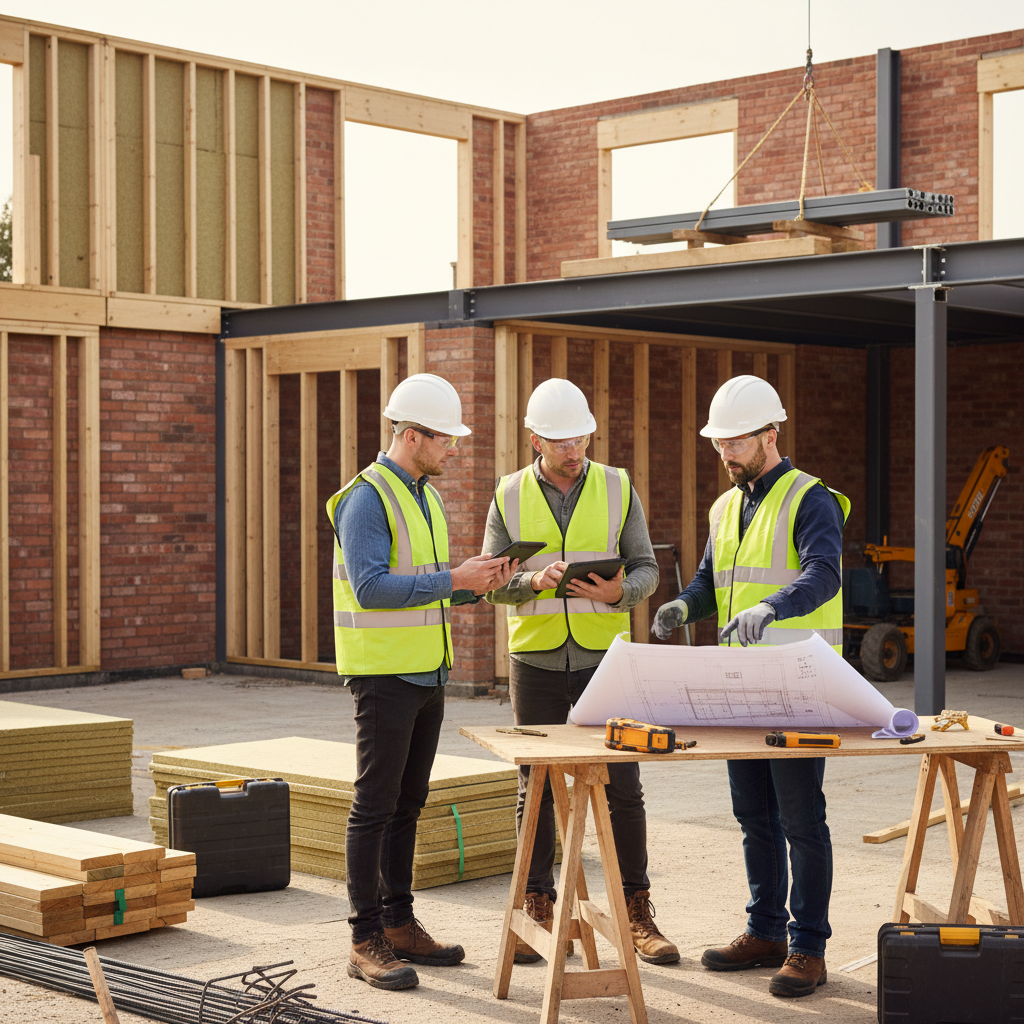
Structural engineers play a vital role in ensuring that building designs aren’t just theoretically sound but can be practically constructed in the real world. This concept, known as buildability, involves careful consideration of construction methods, material availability, labour requirements, and cost factors to deliver projects that are safe, efficient, and economically viable.
Key Highlights
Here’s what you need to know about how structural engineers ensure buildability:
- UK structural engineers prioritise buildability to create designs that are practical, cost-effective, and safe to construct.
- Building Regulations 2010 and the newly enhanced safety regime for higher-risk buildings form the regulatory framework for structural design.
- Modern Methods of Construction (MMC) and digital tools like BIM significantly enhance buildability and construction efficiency.
- Design-stage risk assessment helps identify potential construction challenges before they become costly problems.
- Professional bodies like CABE, RICS, and NHBC ensure quality assurance and compliance throughout the construction process.
Understanding the Buildability Concept

Buildability refers to the extent to which a building design facilitates efficient construction, taking into account the technical and resource constraints of the project. At its core, buildability is about creating designs that maintain structural integrity while being practical to build using available materials, skills, and technologies. According to the Construction Industry Research and Information Association, projects with high buildability can reduce construction time by up to 20% and costs by 15%. UK structural engineers approach buildability as a fundamental design principle rather than an afterthought, considering construction logistics from the earliest design stages.
Design-Stage Risk Assessment
A critical aspect of ensuring buildability is conducting thorough design-stage risk assessment in accordance with the Construction (Design and Management) Regulations (CDM 2015). This process involves identifying potential construction hazards and challenges before breaking ground, allowing engineers to modify designs for safer, more efficient building. Engineers systematically evaluate factors such as site access constraints, temporary works requirements, lifting operations, and assembly sequences. By anticipating these issues during design, structural engineers can eliminate many construction problems that might otherwise lead to delays, cost overruns, or safety incidents, creating a smoother path from design to completion for all stakeholders involved in the project.
Regulatory Compliance and Standards

Structural engineers in the UK must navigate a complex regulatory landscape that directly impacts buildability. The Building Regulations 2010 form the cornerstone of construction compliance, with Part A (Structure) specifically addressing structural safety and stability. These regulations are interpreted through Approved Documents that provide practical guidance on meeting legal requirements. Since April 2024, the Building Safety Regulator (BSR) has enforced an enhanced safety regime for higher-risk buildings, adding another layer of compliance considerations for structural engineers. This evolving regulatory framework requires engineers to stay current with changing requirements while designing structures that can be practically built.
Technical Design Considerations
When developing buildable designs, structural engineers rely heavily on technical standards including British Standards (BS EN) and Eurocodes. These standards provide the framework for calculations and specifications that ensure buildings can withstand expected loads while remaining practical to construct. Engineers must balance theoretical performance with practical construction methods, often making decisions about structural systems based on their buildability. For example, a theoretically optimal steel configuration might be modified to use standardized sections that are readily available, reducing both cost and construction time. This technical balancing act requires engineers to possess both deep theoretical knowledge and practical construction experience to achieve the best outcomes.
Modern Methods of Construction

The UK construction industry has seen accelerated adoption of Modern Methods of Construction (MMC) since 2024, particularly in housing and public sector projects. These approaches—including modular construction, off-site fabrication, and prefabricated systems—have transformed how structural engineers approach buildability. By designing for components to be manufactured in controlled factory environments, engineers can specify more precise tolerances and achieve higher quality while reducing on-site construction time. BIM Level 2, mandatory on major UK projects since 2016, allows engineers to virtually test construction sequences and identify potential clashes before they occur on site. The integration of these technologies has enabled structural engineers to design buildings that are not only structurally sound but also optimized for efficient assembly.
Resource Management and Cost Control
Effective cost management is integral to buildability, with structural engineers increasingly expected to design with resource constraints in mind. With the UK construction industry facing persistent labour shortages (1.4 million employees in 2023, excluding self-employed workers) and rising material costs, engineers must prioritize efficient use of both. This often means designing with standardized components, minimizing material waste, and considering construction sequencing to reduce labour requirements. Life cycle cost analysis has become a standard practice, encouraging engineers to consider not just initial construction costs but long-term maintenance and operational expenses. By addressing these resource challenges during design, structural engineers help ensure that projects remain financially viable throughout construction and beyond.
The collaboration between structural engineers, architects, and contractors is essential to achieving truly buildable designs. As demonstrated in integrating structural design early, when engineers are involved from the concept stage, they can influence key decisions that affect buildability. Similarly, early structural coordination helps prevent construction delays by addressing potential issues before they arise. For projects utilizing off-site methods, engineers must apply special considerations as outlined in structural considerations for prefab buildings.
Sources
GOV.UK – Building Regulations Approval
Health and Safety Executive – CDM 2015
Office for National Statistics – Construction Industry Data
Construction Products Association – Industry Forecasts
British Standards Institution – Construction Standards
